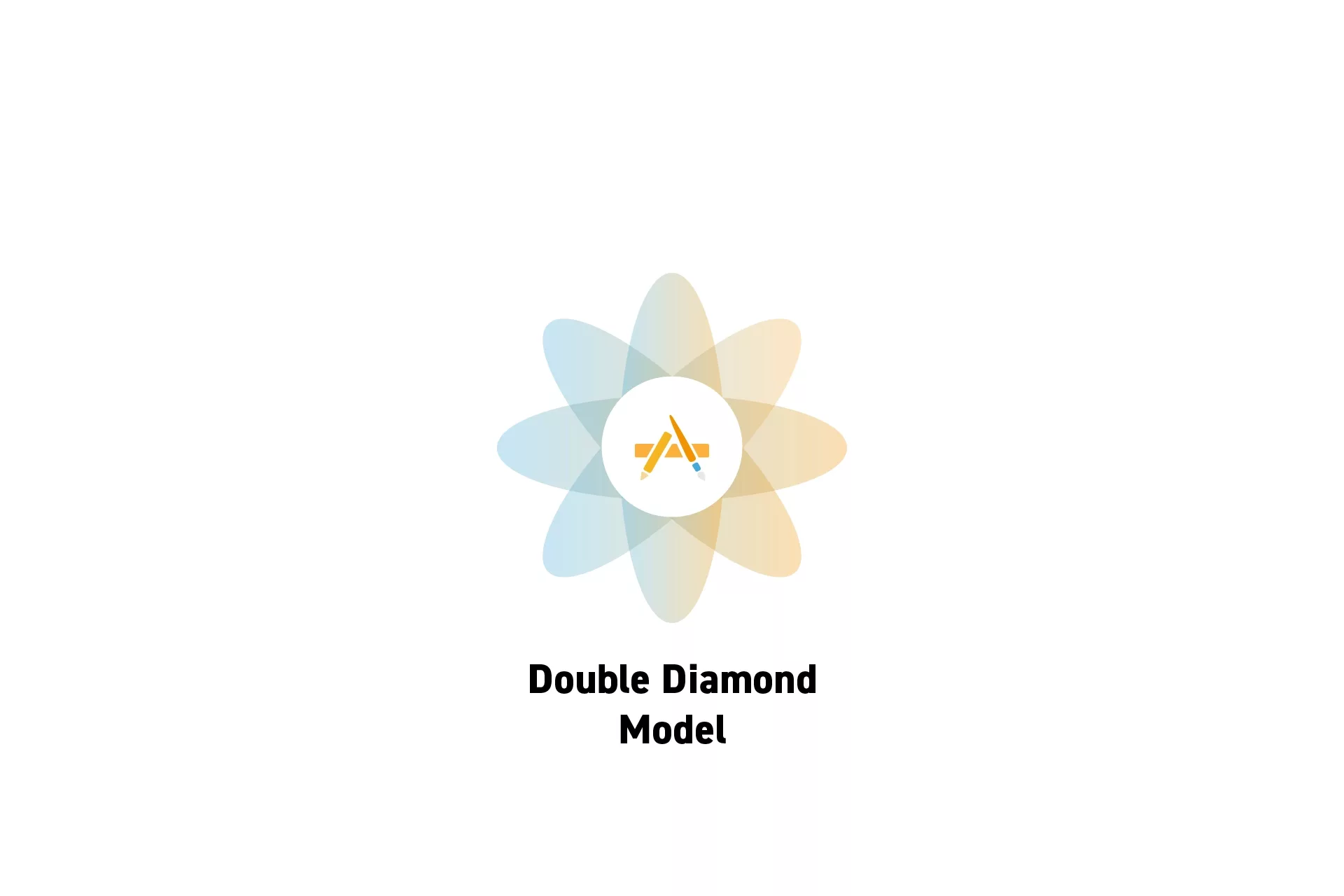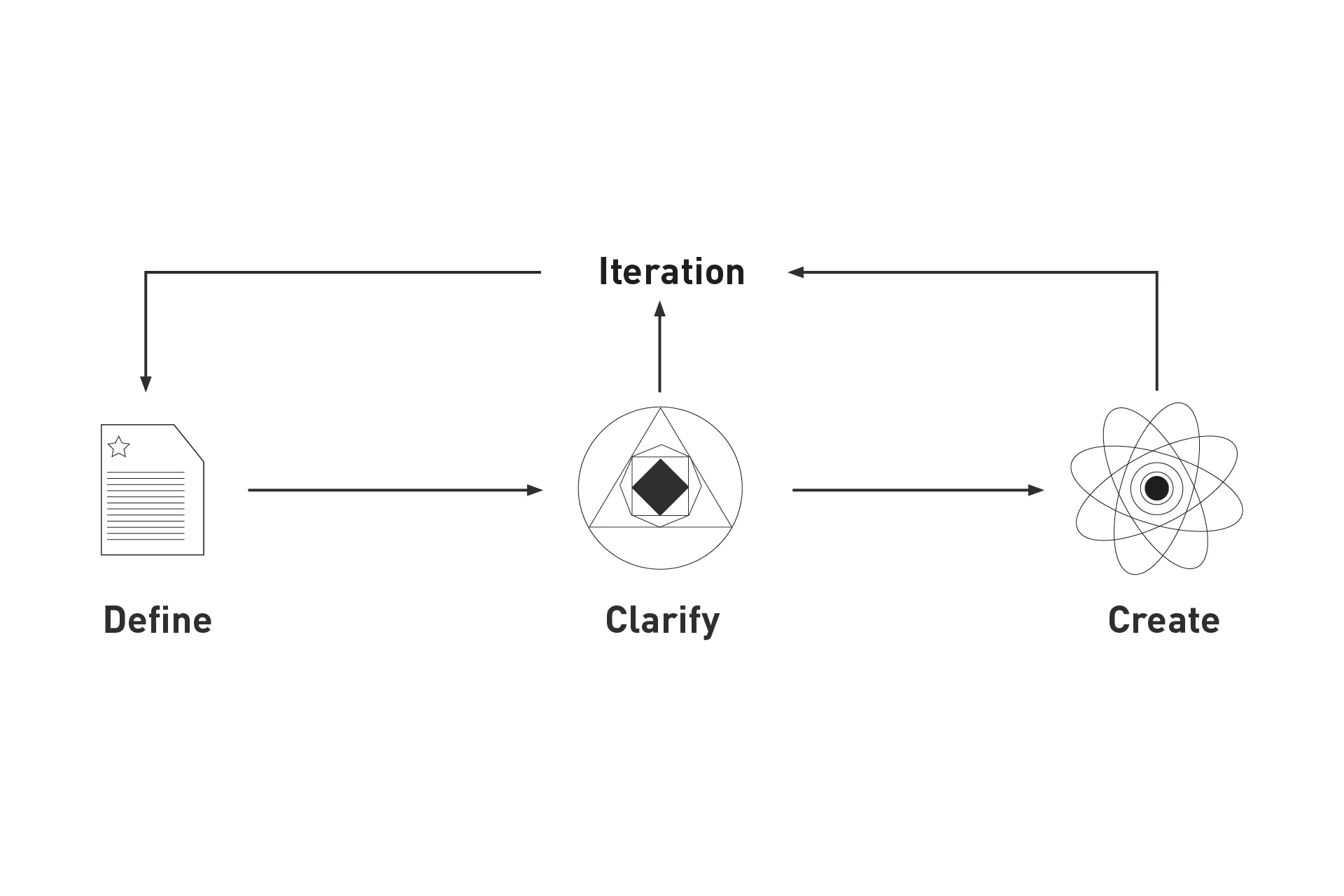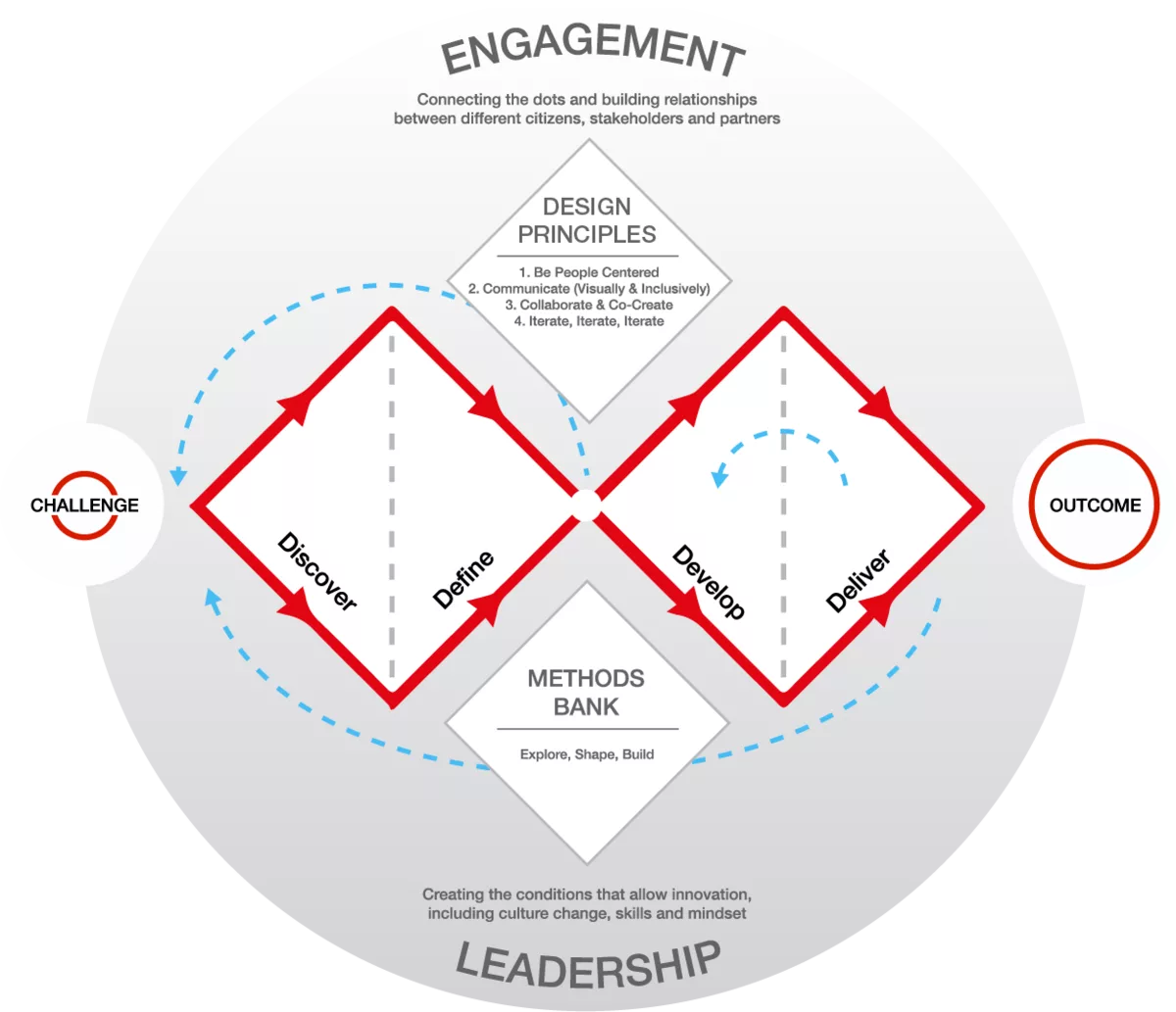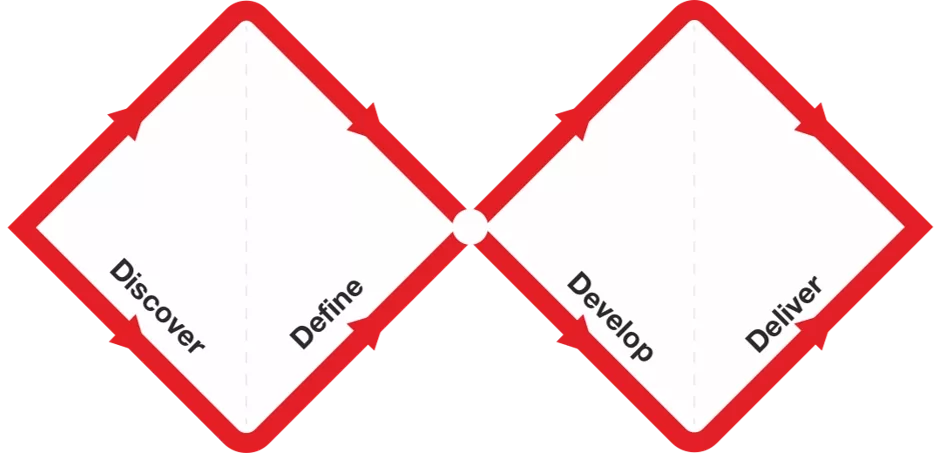What is the Double Diamond design model?
A design process, or innovation model, which enables teams to create something of value through four stages: discovery, definition, development and delivery.

A design process, or innovation model, which enables teams to create something of value through four stages: discovery, definition, development and delivery.
SubscribeThe Double Diamond design model is a framework for innovation popularized by the British Design Council in 2005 which was adapted from the divergence-convergence model proposed in 1996 by Hungarian-American linguist Béla Heinrich Bánáthy in their book Designing Social Systems in a Changing World.
In this work, Bánáthy describes the dynamics of a design process as going through a stage of divergent exploration and then iterating to converge and refine a specific alternative.
Similarly, the Double Diamond innovation model involves a process designed to convert a challenge into a valuable outcome for a target audience through two converging diamonds which are meant to be traversed as many times as needed to either guarantee value is being delivered, or to continuously deliver value to the target audience.
This challenge should be framed through a Hypothesis that are supported by Insights and a series of How Might We's which are conceived as part of the discovery process.
The first diamond involves expanding on a challenge through two phases: An expansive discover phase and a converging define phase.
At this point a team should create a series of design principles to inform the development and delivery process.
In the event that this process and the other products of research synthesis inform the team that they are not on the right path, the team should return back to the start of the first diamond and carry out the discovery and define phases again.
The second diamond expands as a team develops and converges as the team delivers the outcome.
Once a team completes the diamond they should iterate on the entire process to continue refining and delivering on an outcome for a target audience.
Looking to learn more about different innovation models or our process?

delasign's process
To learn more about different innovation models or about our process for creating products, services and experiences consult the links below.
Looking to learn more about Project Management, Design, Technology and Strategy?
Search our blog to find educational content on project management, design, development and strategy.

